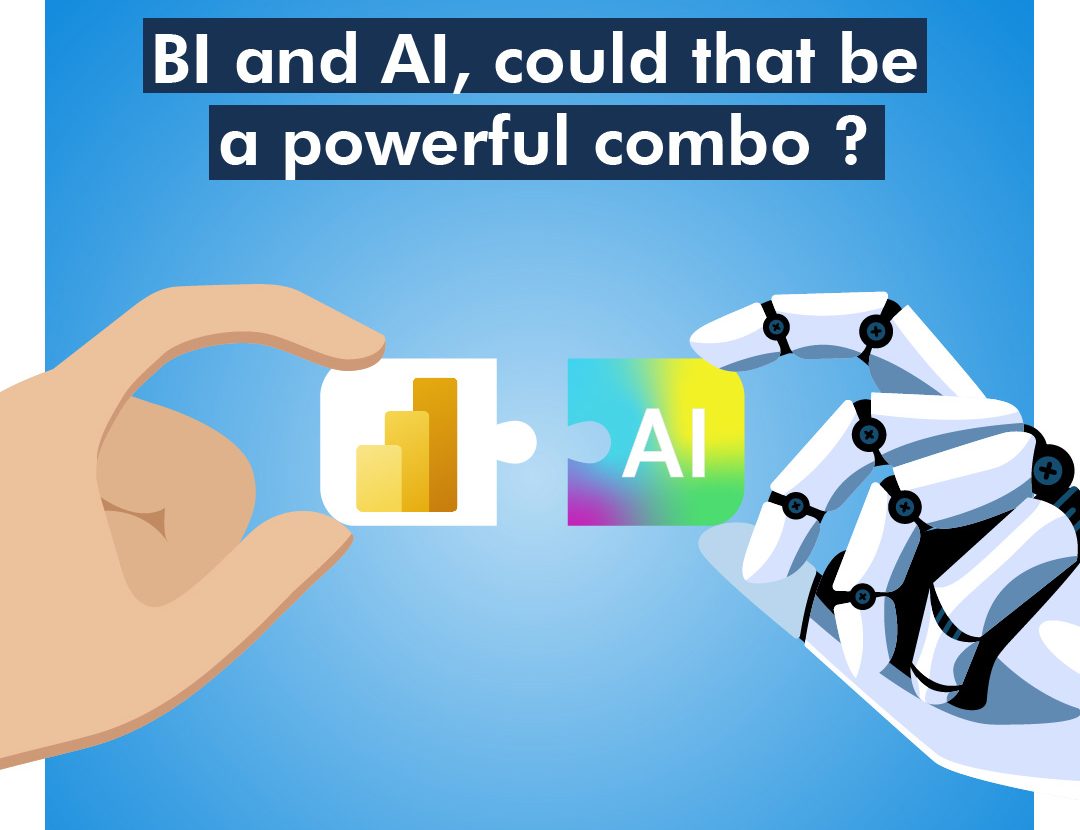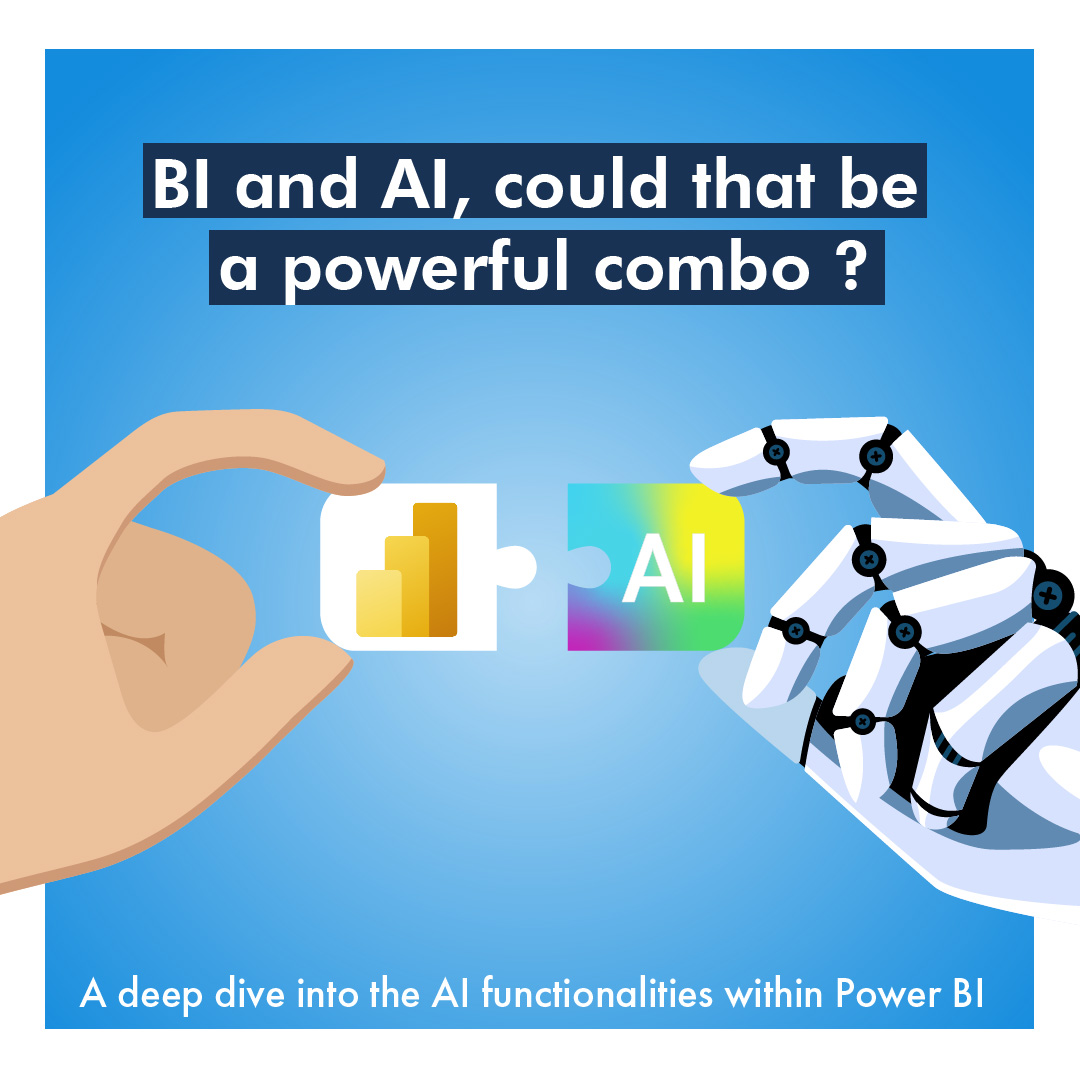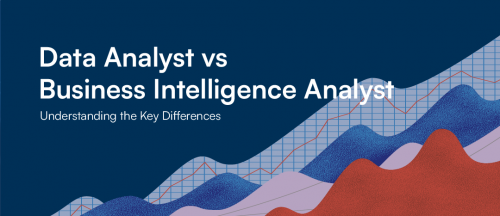

BI and AI, could that be a powerful combo ? A deep dive into tha AI functionalities within Power BI

In the ever-evolving landscape of business intelligence, Power BI stands out as a leading force, especially with its integration of artificial intelligence (AI). This section delves into the intricate functionalities of Power BI, shedding light on the AI-driven features that redefine data analysis and decision-making.
- Advanced analytics capabilities: Power BI’s collaboration with Azure Machine Learning delivers advanced analytics capabilities that empower organizations to predict future trends and identify patterns in historical data. This integration allows users to create, deploy, and manage machine learning models within the Power BI environment.
- Automated data preparation with Power Query: Power BI’s AI shines in its data preparation tool, Power Query. Automation of tasks such as data cleaning and transformation streamlines the process, offering suggestions for data transformation steps. This functionality not only saves time but allows users to focus on deriving meaningful insights from their data.
- Natural Language Processing (NLP) with Q&A: The Q&A feature in Power BI incorporates natural language processing, enabling users to interact with data through plain language queries. This user-friendly approach democratizes data exploration, making BI accessible to a broader audience. Power BI interprets user questions, understands context, and generates relevant visualizations, fostering a culture of data-driven decision-making.
- Cognitive services integration: Power BI’s integration with Microsoft’s Cognitive Services introduces sentiment analysis, image recognition, and language translation. This integration enhances data analysis by extracting valuable insights from diverse data sources, providing a deeper understanding of customer feedback, sentiments, and emerging trends.
- Smart insights and recommendations: The Smart Narrative feature in Power BI goes beyond conventional reporting by automatically generating narratives that explain data trends. This AI-driven capability provides users with intelligent insights and recommendations.
Why AI’s functionalities are a benefit:
- Time efficiency and agility: The automation of data preparation tasks significantly reduces the time required for analysis. Power BI’s AI-driven capabilities enable organizations to make faster, data-driven decisions, crucial for staying agile in dynamic business environments.
- Precision and accurate decision-making: The use of AI algorithms enhances the accuracy of insights by identifying patterns and trends that might be overlooked through manual analysis. This precision is particularly crucial for forecasting and strategic planning, ensuring that decisions are based on the most accurate and relevant information.
- Democratization of data: Power BI’s intuitive interfaces and NLP features make data analysis more accessible to a broader audience within the organization. This democratization of data empowers individuals across various departments to explore and leverage insights without extensive technical expertise.
While the functionalities of AI within Power BI open new avenues for data analysis, we are at Headmind Partners aware that organizations must also navigate potential risks. This section explores the challenges and considerations that come with the integration of AI in Power BI.
- Data privacy and security concerns: The increased reliance on AI for data analysis raises concerns about the privacy and security of sensitive information within Power BI. Organizations must diligently manage and protect data, adhering to robust security protocols to prevent unauthorized access and potential breaches.
- Interoperability and integration challenges: As Power BI integrates with emerging technologies like edge computing and IoT, ensuring seamless interoperability becomes crucial. Organizations need to address challenges related to data integration, system compatibility, and the cohesiveness of AI-driven features with these evolving technologies.
- Potential bias in AI algorithms: AI algorithms are not immune to biases present in the data used for training. Power BI users must be aware of the potential biases in predictive models, especially when dealing with diverse datasets. Regular audits and reviews of AI models can help mitigate the risks associated with biased decision-making.
- Skillset transformation and training needs: Organizations need to invest in training their workforce to effectively leverage AI tools and interpret the nuanced insights generated by Power BI. A lack of skillset transformation may hinder the optimal utilization of AI functionalities. It is really critical for companies that their workforce understand what is AI and how it works while implementing it.
- Mitigating risks and ensuring ethical AI use robust governance and compliance: Establishing robust governance frameworks and ensuring compliance with data protection regulations are paramount. Organizations must define clear policies for AI usage within Power BI, emphasizing transparency, accountability, and ethical considerations.
- Continuous monitoring and auditing: Regular monitoring and auditing of AI models within Power BI can help identify and rectify biases, ensuring the accuracy and fairness of insights generated. This proactive approach mitigates risks associated with biased decision-making. It is as much needed, if not more, with AI than ever before. Understanding how AI works will come a long way in its monitoring.
- Investment in ethical AI education: Organizations should prioritize educating their teams on ethical AI practices. This includes raising awareness about potential biases, promoting responsible AI usage, and fostering a culture of ethical data analysis within the Power BI environment.
Conclusion
As organizations leverage the powerful AI-driven functionalities within Power BI, they must also address potential risks. By adopting a proactive approach to data privacy, security, and ethical considerations, organizations can harness the transformative potential of AI within Power BI while mitigating associated risks. Balancing innovation with responsibility is key to unlocking the true benefits of AI in the realm of business intelligence.
https://learn.microsoft.com/en-us/power-bi/transform-model/desktop-ai-insights
https://www.popautomation.com/post/power-bi-ai-features
https://3cloudsolutions.com/resources/the-ultimate-list-of-ai-features-in-power-bi/






